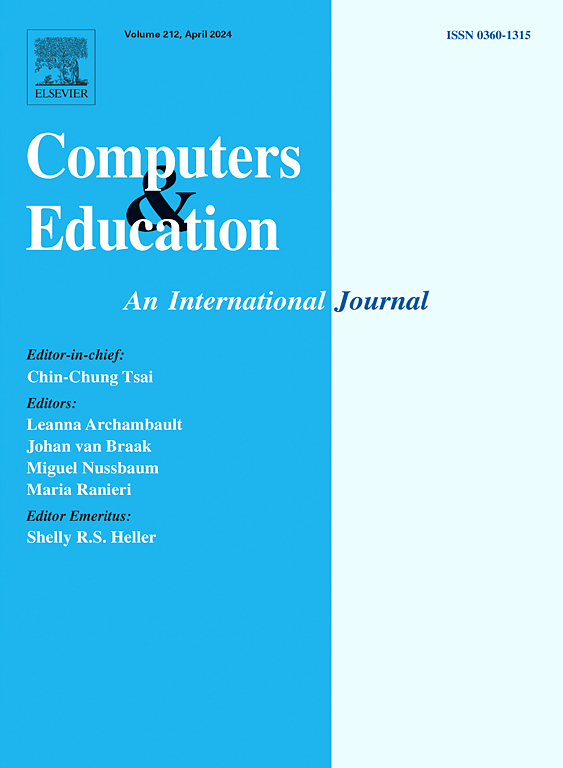Effects of a human-robot collaborative teaching approach on preschoolers’ social-emotional competence and learning behaviors
IF 10.5
1区 教育学
Q1 COMPUTER SCIENCE, INTERDISCIPLINARY APPLICATIONS
引用次数: 0
Abstract
Preschoolers' social-emotional competence is key to their long-term academic success. Developing this competence requires meaningful social interactions and emotional support, which the conventional teaching (CT) approach may not fully provide. This study proposed a human-robot collaborative teaching (HRCT) approach to facilitate preschoolers' social-emotional learning (SEL). A human-robot collaborative teaching system was developed to foster preschoolers' social-emotional competence through collaboration between the humanoid intelligent robot and the teacher. To evaluate the effectiveness of this approach, 96 preschoolers with an average age of 4.6 years were recruited. Of these, 44 were randomly assigned to the experimental group, which utilized the HRCT approach, while 52 were assigned to the control group, which followed the conventional teaching approach. The results indicated that the experimental group outperformed the control group in terms of social interaction skills, emotion comprehension skills, and interpersonal problem-solving skills. Significant differences were also observed in the learning behaviors of preschoolers during activities related to social interaction, emotion comprehension, and interpersonal problem solving. Further analysis of the teacher's perceptions and reflections revealed that, despite some limitations of the robot, its anthropomorphic and embodied features effectively sparked preschoolers' interest and engagement. These features contributed to enhancing their social-emotional competence by simulating and practicing SEL processes.
人机协作教学方式对学龄前儿童社交情绪能力和学习行为的影响
学龄前儿童的社会情感能力是他们长期学业成功的关键。培养这种能力需要有意义的社会互动和情感支持,而传统的教学方法可能无法完全提供这些。本研究提出了一种促进幼儿社会情绪学习的人机协作教学方法。设计了一种人-机器人协作教学系统,通过类人智能机器人与教师的协作,培养幼儿的社交情感能力。为了评估这种方法的有效性,我们招募了96名平均年龄为4.6岁的学龄前儿童。其中,实验组44人,采用HRCT教学方法;对照组52人,采用常规教学方法。结果表明,实验组在社交能力、情绪理解能力和人际问题解决能力方面均优于对照组。学龄前儿童在社会交往、情绪理解和人际问题解决方面的学习行为也存在显著差异。进一步分析老师的感知和反思,发现尽管机器人有一些局限性,但它的拟人化和具体化的特征有效地激发了学龄前儿童的兴趣和参与。这些特征有助于通过模拟和实践SEL过程来提高他们的社会情感能力。
本文章由计算机程序翻译,如有差异,请以英文原文为准。
求助全文
约1分钟内获得全文
求助全文
来源期刊

Computers & Education
工程技术-计算机:跨学科应用
CiteScore
27.10
自引率
5.80%
发文量
204
审稿时长
42 days
期刊介绍:
Computers & Education seeks to advance understanding of how digital technology can improve education by publishing high-quality research that expands both theory and practice. The journal welcomes research papers exploring the pedagogical applications of digital technology, with a focus broad enough to appeal to the wider education community.
 求助内容:
求助内容: 应助结果提醒方式:
应助结果提醒方式:


